Roseate Spoonbill: The Graceful Beauty of Pink Plumage
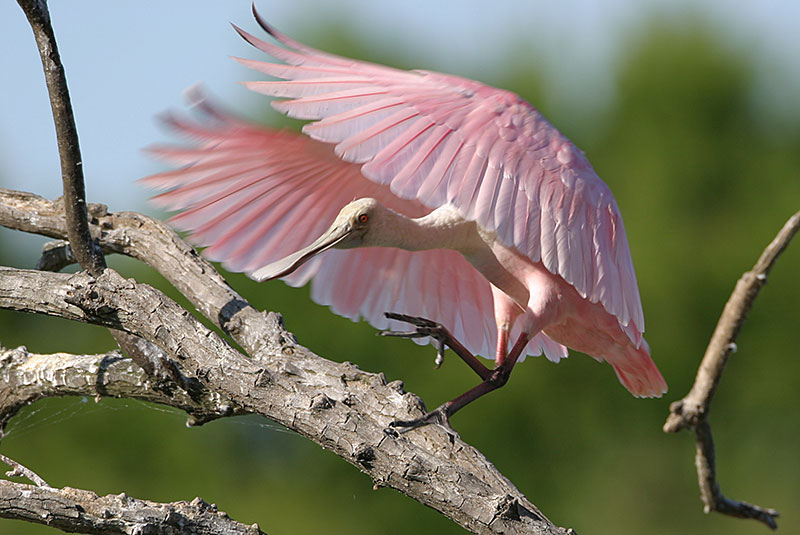
The Roseate Spoonbill (Platalea ajaja) is a truly mesmerizing bird, renowned for its graceful beauty and stunning pink plumage. Found in the wetlands and coastal regions of the Americas, this avian species captures the hearts of birdwatchers and nature enthusiasts with its unique appearance and captivating behaviors. With its characteristic spoon-shaped bill, vibrant pink feathers, and elegant presence, the Roseate Spoonbill is a true marvel of the avian world. In this article, we will explore the delightful characteristics, habitat, and fascinating traits of the Roseate Spoonbill, celebrating the graceful beauty of its pink plumage.
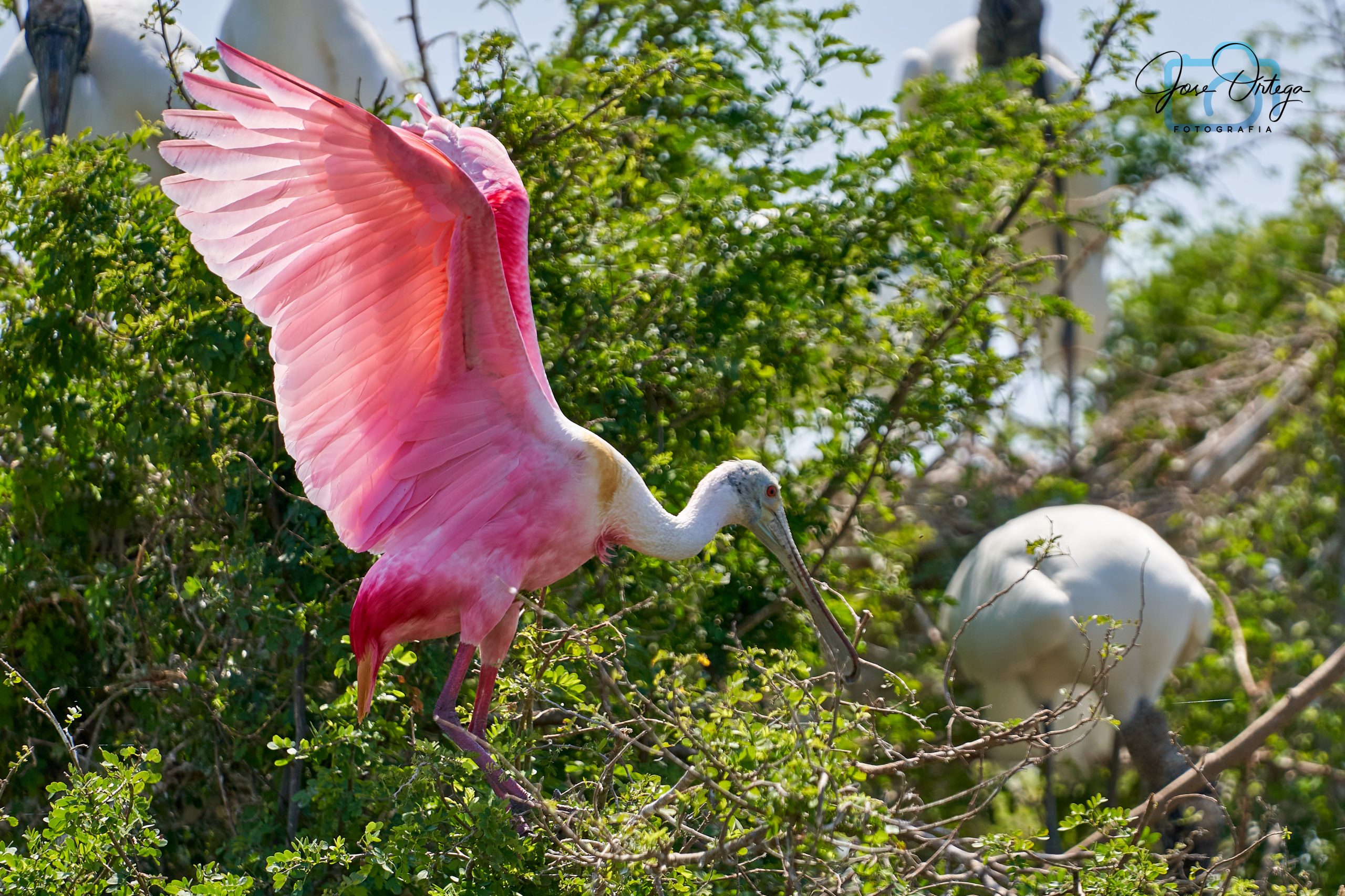
The Roseate Spoonbill is unmistakable with its striking pink plumage, which sets it apart from other birds in its environment. Adults display a rosy-pink color on their wings, back, and tail, while their underparts showcase an even more vivid shade of pink. The intensity of the pink hue varies depending on the bird’s age, diet, and breeding status. Juvenile Spoonbills exhibit more mottled plumage, transitioning into the vibrant pink hues as they mature. In addition to its captivating pink color, the Roseate Spoonbill boasts a wingspan of about 120-130 cm (47-51 inches), making it an impressive sight in flight.
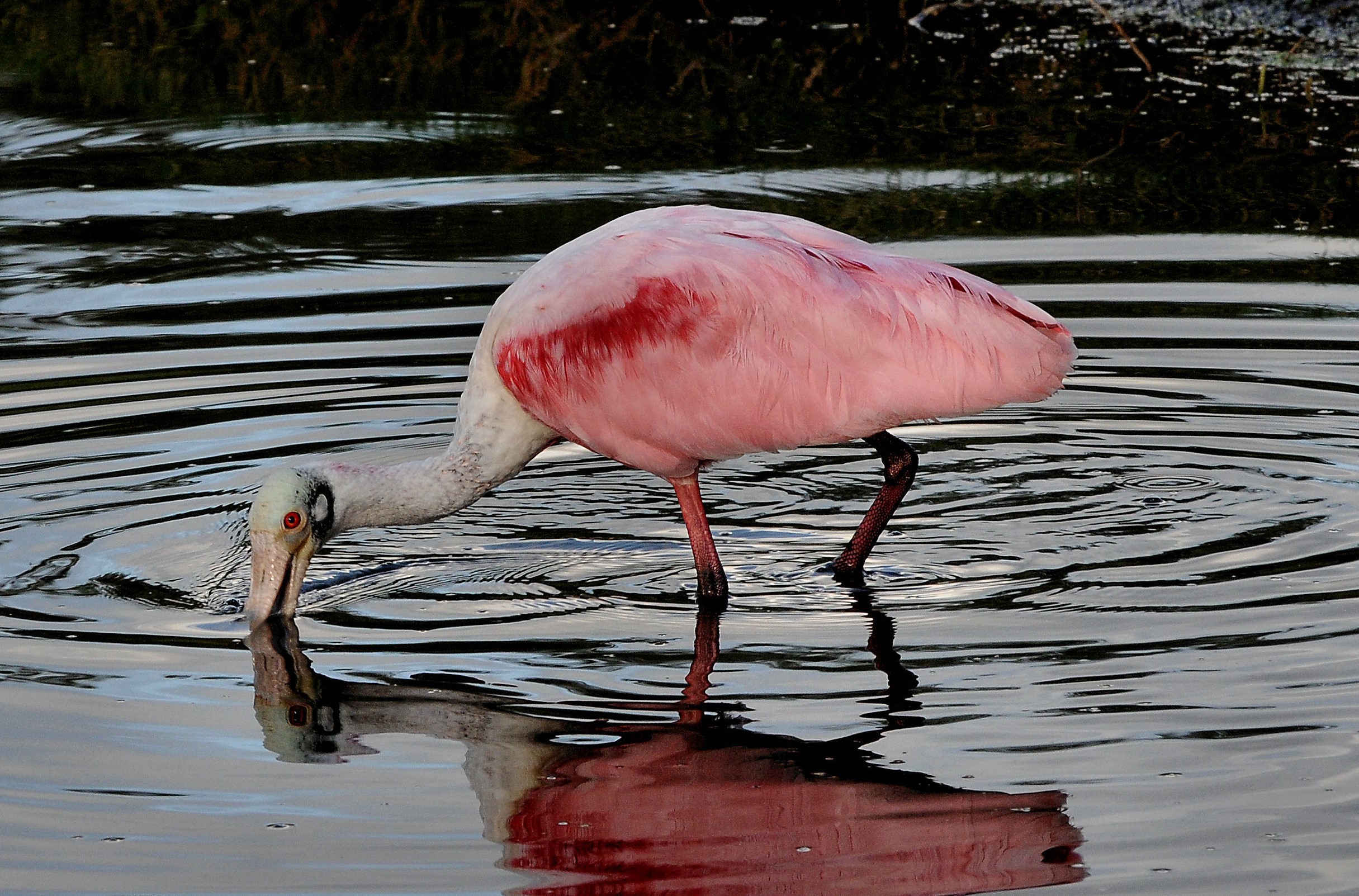
One of the most remarkable features of the Roseate Spoonbill is its distinctive bill, which gives the bird its name. The bill is elongated and flattened, with a spoon-like tip that aids in its foraging behavior. Using its specialized bill, the Spoonbill sweeps it through shallow water in a side-to-side motion, capturing small aquatic creatures, such as fish, crustaceans, and insects. The unique feeding technique of the Roseate Spoonbill makes it an efficient and fascinating predator to observe.
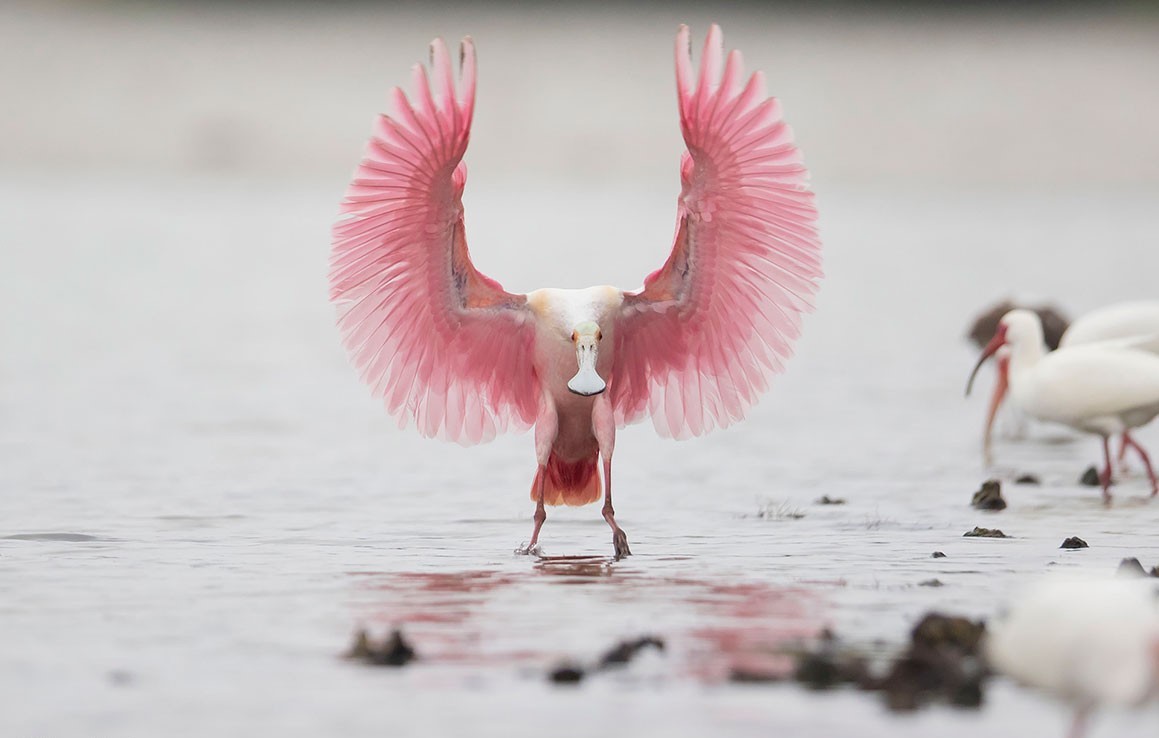
The Roseate Spoonbill is primarily found in wetlands, marshes, mangroves, and coastal estuaries throughout the Americas. Their range extends from the southeastern United States, Mexico, and the Caribbean to Central and South America. These habitats offer the Spoonbill a rich source of food and nesting sites, making them well-adapted to their surroundings.
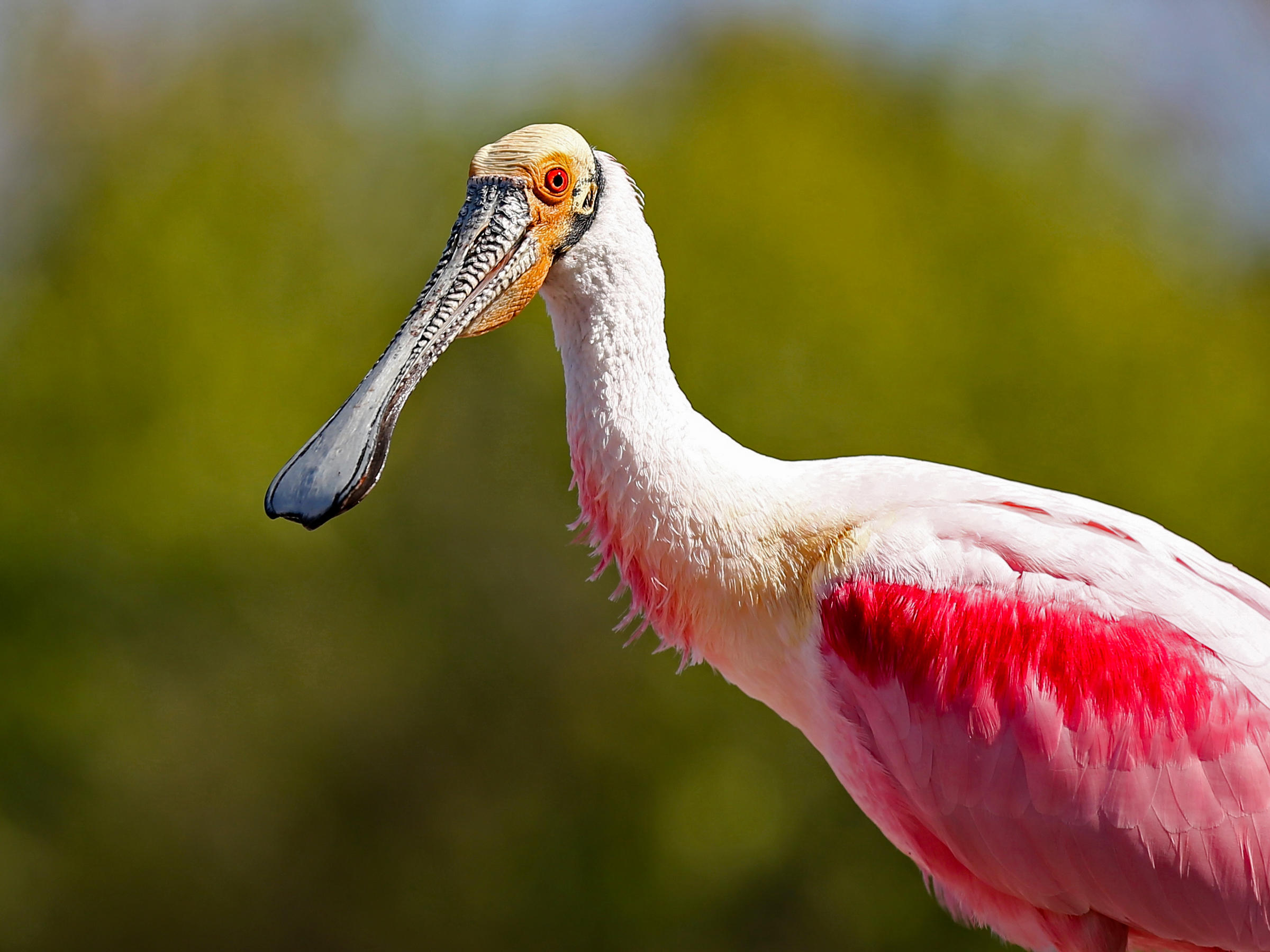
During the breeding season, the Spoonbills gather in colonies, often nesting alongside other wading bird species. They construct their nests in dense vegetation, such as shrubs and trees, near bodies of water. Both males and females participate in building the nest and raising the young. The eggs are incubated by both parents, and after hatching, the chicks are cared for and fed regurgitated food. These communal nesting sites create a spectacle of pink and a hub of activity, drawing attention from birdwatchers and researchers alike.
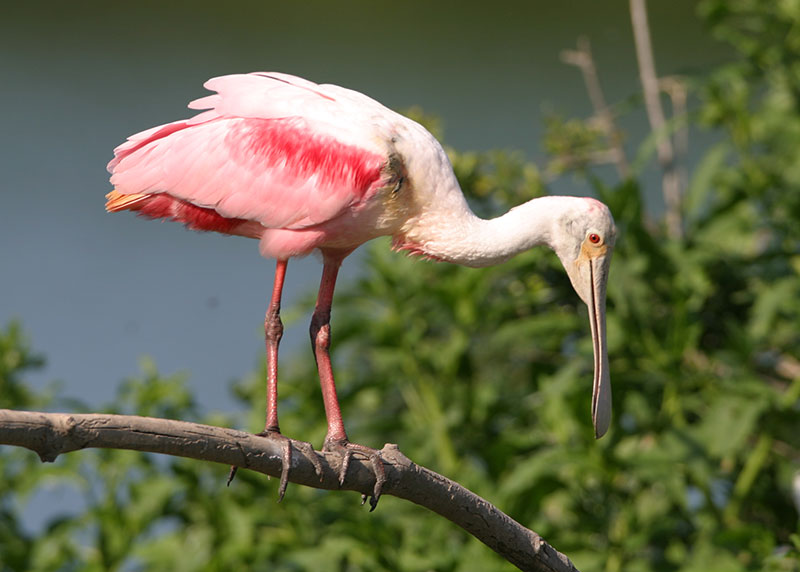
The Roseate Spoonbill faced significant population declines due to habitat loss, hunting for feathers in the past, and disruptions to nesting colonies. However, conservation efforts and protective measures have helped the species recover in recent years. The Spoonbill’s conservation status varies across its range, with some populations listed as “Least Concern” by the International Union for Conservation of Nature (IUCN) and others as “Near Threatened.” Continued conservation efforts are essential to safeguard these magnificent birds and their delicate wetland habitats.
The Roseate Spoonbill is a true marvel of nature, enchanting all who have the privilege to observe its graceful beauty and captivating pink plumage. From its unique spoon-shaped bill to its elegant presence in coastal wetlands, this bird embodies the essence of natural wonder. As we celebrate the majestic allure of the Roseate Spoonbill, let us also strive to protect and preserve the vital habitats that sustain these remarkable birds, ensuring that futuregenerations can continue to appreciate the graceful beauty of the Spoonbill’s pink plumage.



